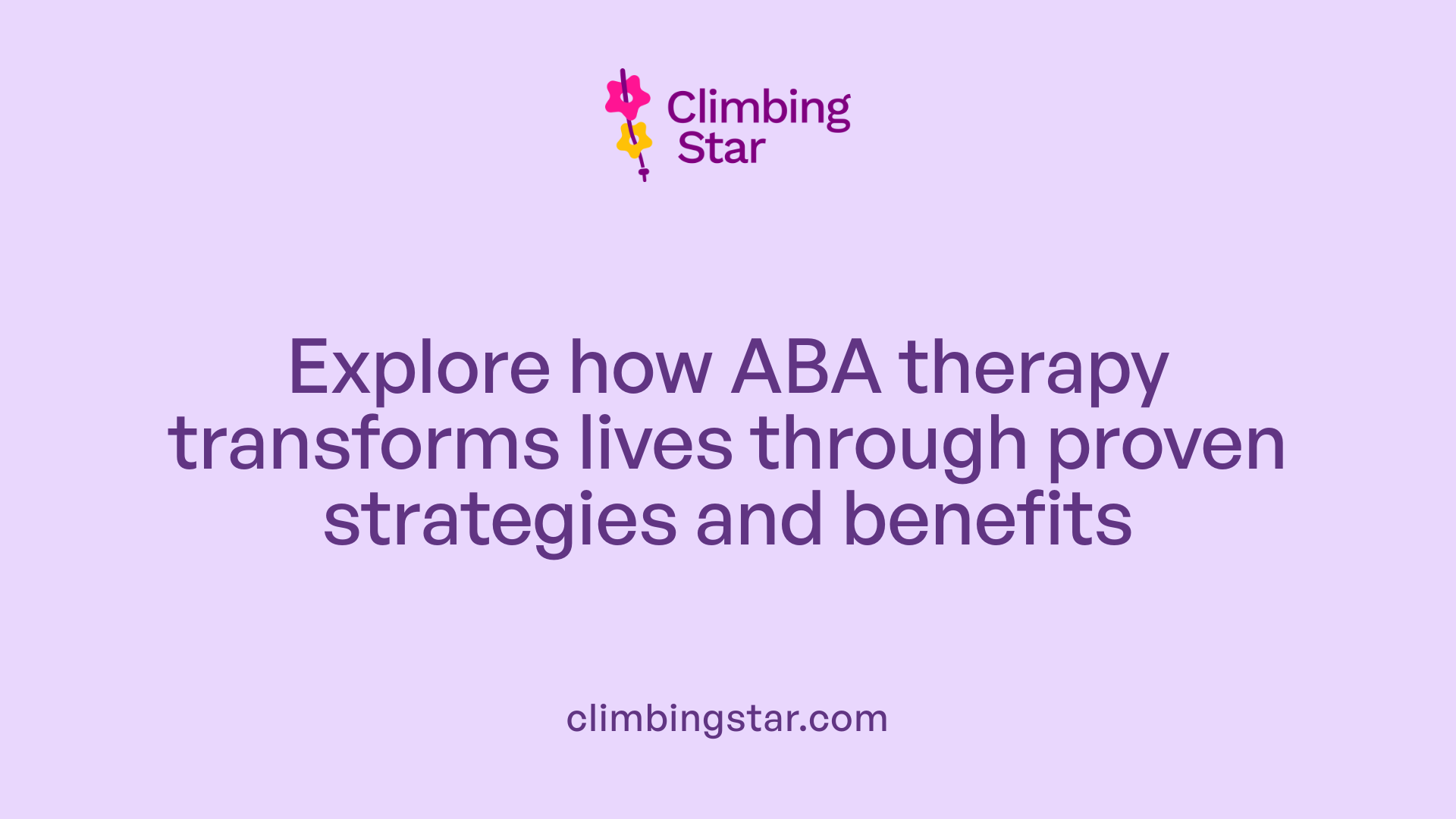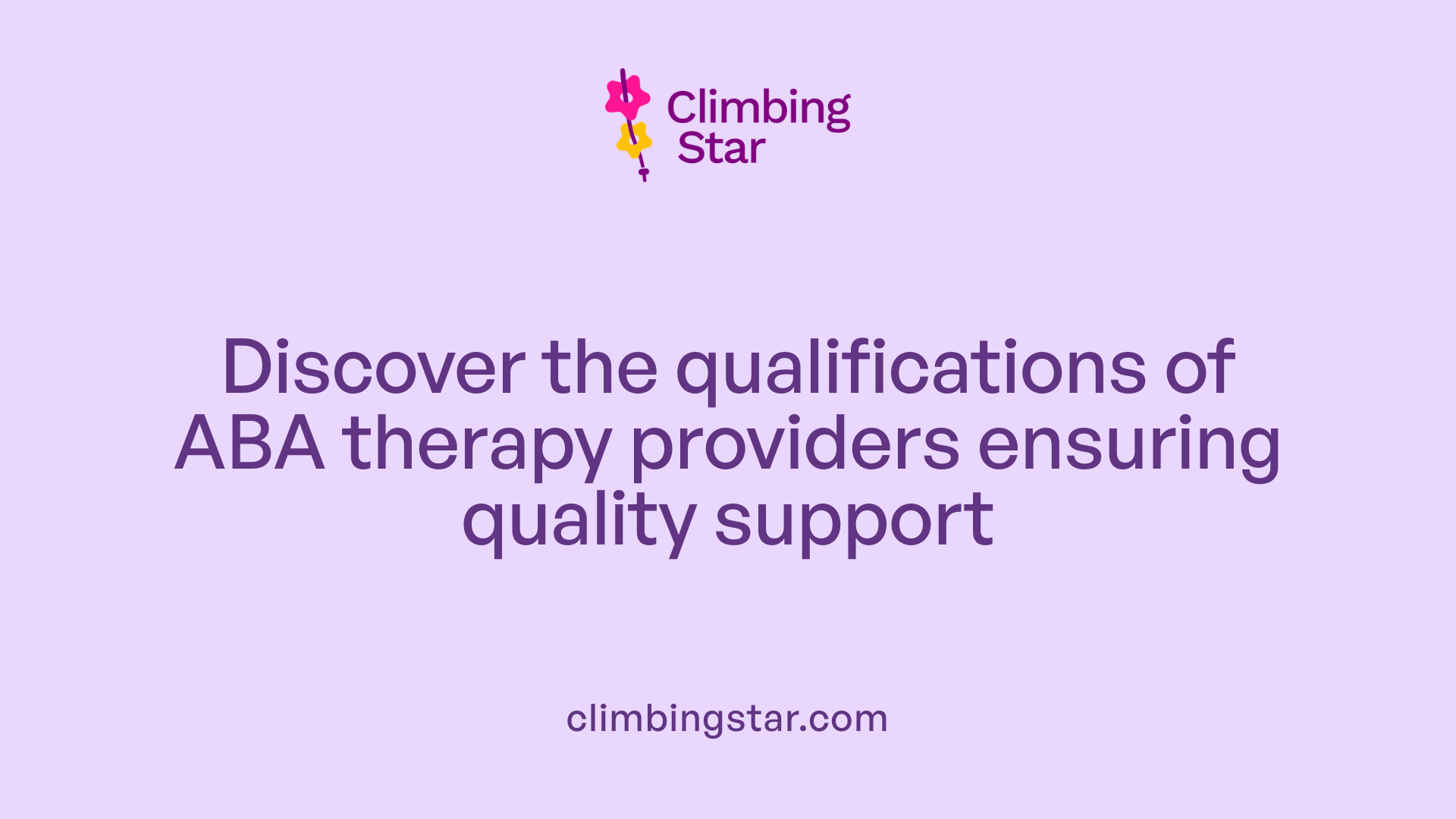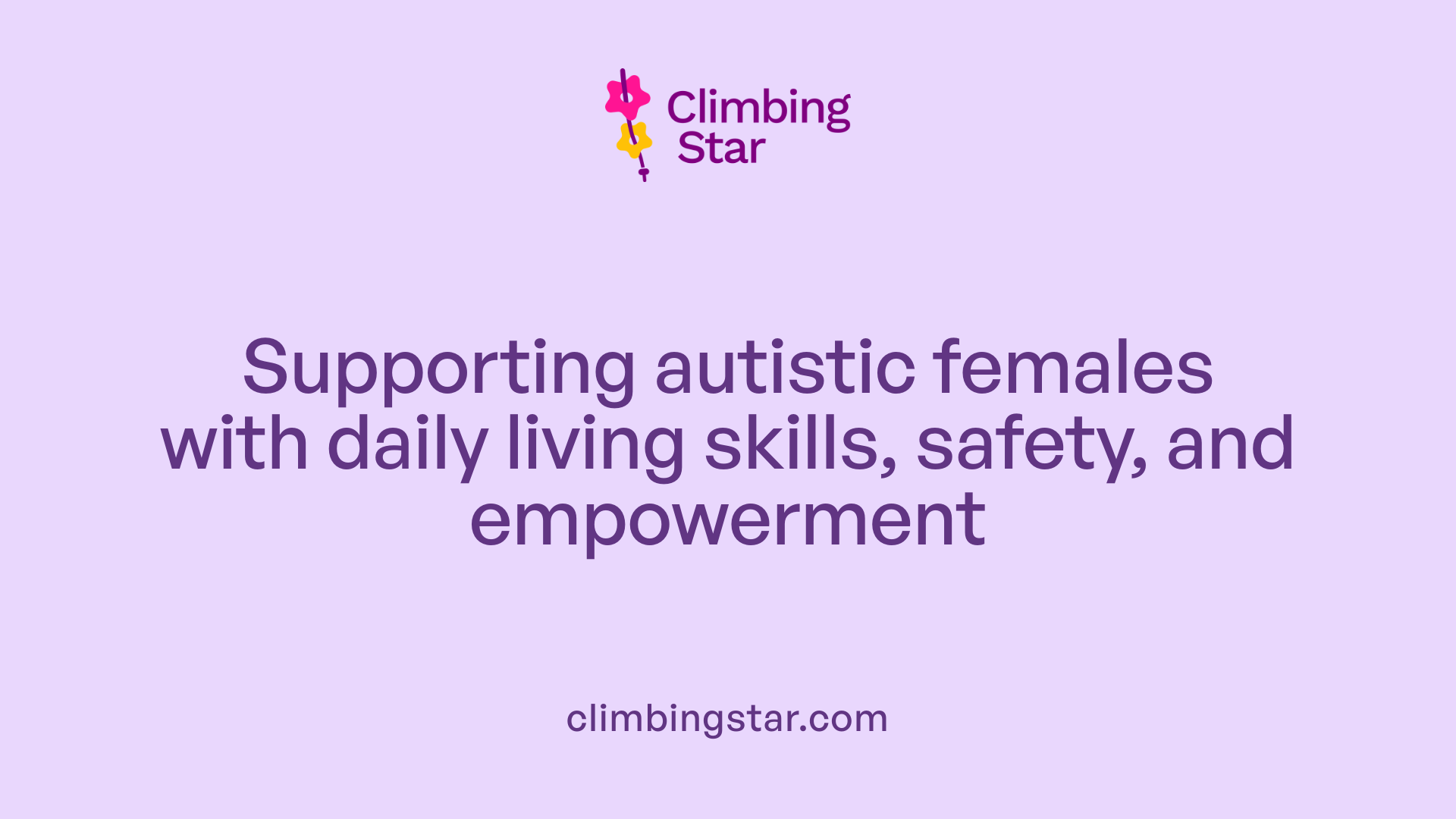Understanding Autism in Females: A Distinct Experience
Autism Spectrum Disorder (ASD) presents differently in girls and women compared to boys, often leading to delayed or missed diagnoses. This under-recognition stems from research predominantly based on male presentations and societal gender norms influencing behavior expression. Recognizing and supporting autistic females requires tailored approaches sensitive to their unique traits and challenges. This article explores the intricacies of autism in women, the role of Applied Behavior Analysis (ABA) therapy, and the importance of personalized interventions to foster independence and quality of life.
Why Autism in Girls is Often Overlooked

Why is autism often diagnosed later or less frequently in girls?
Autism in girls tends to be diagnosed later or less frequently compared to boys primarily because the research and diagnostic standards have historically focused on boys. This has resulted in an incomplete understanding of how autism presents in girls, who may show different or subtler signs.
Impact of gender norms on autism recognition
Social and cultural gender norms also play a significant role in obscuring signs of autism in girls. Behaviors that might be interpreted as autistic in boys are often seen as typical or socially acceptable in girls. This makes it harder for clinicians and caregivers to recognize autism in girls, contributing to delayed or missed diagnoses.
How do autistic traits in girls compare to their neurotypical peers?
Girls with autism often have interests similar to neurotypical girls, such as storybooks, unicorns, horses, jewelry, and fantasy themes. However, these interests tend to be more intense and focused. This similarity can mask autism traits, making it challenging to distinguish between neurotypical behaviors and those linked to autism. Despite these overlaps, girls with autism may struggle more than boys with executive functions like planning, organizing, and impulse control.
These factors combined explain why autism in girls is frequently overlooked or recognized later than in boys, underscoring the need for gender-sensitive diagnostic approaches and greater awareness of female autism presentations.
Distinctive Traits of Autism in Girls and Women

How do autistic girls typically present differently than boys?
Girls with autism spectrum disorder (ASD) often show interests that resemble those of neurotypical girls, including themes like storybooks, unicorns, horses, jewelry, and other fantasy topics. However, these interests tend to be more intense and focused, reflecting a pronounced fixation rather than a casual preference.
Communication skills and executive function challenges
While girls with ASD generally have communication abilities similar to boys with ASD, they often struggle more significantly with executive functions. These challenges include difficulties in organizing information, planning and completing activities, managing working memory, controlling impulses, and maintaining cognitive flexibility. Such struggles can affect daily functioning despite comparable communication skills.
Social behavior differences influenced by gender norms
Autism in girls is often harder to identify because social and cultural gender norms can mask or obscure typical signs of autism. Girls may unconsciously adapt or camouflage behaviors to fit expected social roles, making their autistic traits less obvious compared to boys. This subtle presentation contributes to later or less frequent diagnosis in girls.
| Aspect | Boys with ASD | Girls with ASD | Additional Notes |
|---|---|---|---|
| Interests | Often focused on specific, less socially typical topics | Similar interests as neurotypical girls but with intense fixation | Interests may include storybooks, fantasy themes |
| Communication Skills | Comparable communication challenges | Similar level but coupled with executive function difficulties | Executive function issues more prominent in girls |
| Social Presentation | More overt behaviors consistent with ASD | Behaviors often camouflaged due to gender norms | Diagnostic challenges arise because signs are less clear |
This nuanced understanding highlights the importance of recognizing how autism manifests uniquely in girls and women to ensure timely and accurate diagnosis and support.
Applied Behavior Analysis (ABA) Therapy: Core Principles and Benefits

What is Applied Behavior Analysis (ABA) therapy and how does it help individuals with autism?
Applied Behavior Analysis (ABA) therapy is based on the scientific study of learning and behavior. It helps people with autism by increasing helpful behaviors and reducing harmful or challenging ones. ABA therapy carefully examines what happens before and after a behavior—the Antecedent-Behavior-Consequence (A-B-C) model—to understand why the behavior occurs.
How does the Antecedent-Behavior-Consequence (A-B-C) model work?
The A-B-C model looks at three parts: the Antecedent (what triggers the behavior), the Behavior itself, and the Consequence (what happens after). By identifying these elements, therapists can teach replacement behaviors that serve the same purpose but are more appropriate. For example, if a child repeats a behavior to get attention, ABA can help teach them to ask for attention using words or gestures instead.
What techniques are used in ABA therapy?
ABA uses a variety of techniques to shape behavior. Positive reinforcement is a core method where good behaviors are followed by rewards, making these behaviors more likely to happen again. Another approach includes naturalistic teaching strategies like Pivotal Response Training (PRT), which focus on motivation and skill development during everyday activities, making learning more engaging and practical.
What are the goals of ABA therapy?
ABA therapy sets personalized goals based on each individual’s abilities and needs. Common targets include improving communication skills, social interactions, self-care routines, play skills, academic learning, and executive functioning abilities such as planning and impulse control. Therapists often break down these goals into small, manageable steps to foster gradual progress.
ABA programs are designed and monitored by qualified behavior analysts (BCBAs) who work closely with families to ensure that therapy remains effective and meaningful. The tailored nature of ABA, combined with data-driven progress tracking, means that interventions can adapt as the individual grows and their needs evolve. Overall, ABA therapy supports independence and success across many areas of life for girls and boys on the autism spectrum.
Who Provides ABA Therapy and Their Qualifications

Who typically provides ABA therapy and what qualifications should they have?
ABA therapy is primarily delivered by professionals known as Board Certified Behavior Analysts (BCBAs) and by trained therapy technicians who work under their supervision. BCBAs hold a master's degree in applied behavior analysis or a related field. Their training includes completing a substantial number of supervised fieldwork hours and passing a rigorous certification exam administered by the Behavior Analyst Certification Board.
Therapy technicians often have a bachelor's degree in fields like psychology or education and assist BCBAs by implementing behavior plans and collecting data. They gain practical experience through oversight and ongoing training from certified professionals.
The qualifications of these providers are crucial because ABA therapy is highly individualized. Effective practitioners not only meet educational and certification standards but also possess skills such as active listening, critical thinking, and adaptability. These skills enable them to design and adjust behavior interventions that align with the individual interests and needs of girls with autism spectrum disorder (ASD).
Having well-trained and qualified ABA providers ensures that therapy goals—ranging from language and social skills to daily living activities—are approached with expertise and sensitivity. This professional competence is foundational to the success of ABA programs in supporting girls with ASD across different environments, including home, school, and community settings.
Structuring and Personalizing ABA Therapy for Girls and Women with Autism
How is ABA therapy typically structured and personalized for different individuals?
Applied Behavior Analysis (ABA) therapy for girls and women with autism is carefully structured around individualized assessments designed to identify each person's unique strengths, challenges, and interests. A qualified behavior analyst (BCBA) conducts a detailed evaluation to set personalized goals that cover communication, social interaction, daily living, and academic skills.
Individualized Assessments and Goal Setting
Goals are broken down into small, manageable steps to make progress measurable and achievable. The therapy plan reflects not only the individual's needs but also their passions, often incorporating interests to engage and motivate the learner effectively.
Family Involvement and Home-Based Therapy
ABA therapy often takes place in the home environment, where family members are actively involved. This integration ensures that learned behaviors generalize across settings and that parents are equipped with strategies to reinforce skills throughout daily routines. Ongoing data collection and regular reviews between the BCBA and family help adjust the plan to sustain meaningful progress.
Integration of Different ABA Teaching Strategies
Therapists combine teaching styles such as Discrete Trial Training (DTT)—which involves structured, step-by-step instruction—with more naturalistic methods like Pivotal Response Training (PRT), which emphasizes motivation and initiating communication in everyday settings. This blend caters to varying learning preferences and supports skill acquisition in real-life contexts.
Collaboration with Multidisciplinary Teams
Comprehensive care involves coordination with speech therapists, occupational therapists, educators, and medical providers. This multidisciplinary teamwork ensures that ABA goals align with other interventions, addressing communication, executive functioning, and social challenges uniquely faced by girls and women with autism.
By personalizing ABA therapy through assessment, family engagement, diverse teaching frameworks, and cross-disciplinary collaboration, interventions become more effective in fostering independence, social connections, and quality of life for girls and women on the autism spectrum.
Expected Outcomes from Consistent ABA Therapy
What outcomes can families expect from consistent ABA therapy for their loved ones with autism?
Consistent Applied Behavior Analysis (ABA) therapy offers promising improvements in various areas for individuals with autism spectrum disorder (ASD). Families can anticipate notable advances in communication skills, including language development and the ability to effectively express needs and emotions. Social interaction often improves, reflected in better engagement with peers and adults, as well as enhanced emotional regulation.
ABA therapy also supports the development of adaptive daily living skills, enabling individuals with ASD—especially girls, who may face unique challenges such as managing puberty and menstruation—to gain greater independence. These daily skills can include organizing information, planning activities, and completing tasks effectively.
A primary benefit of ABA is the reduction in challenging behaviors, such as repetitive actions or impulsivity, by using techniques like positive reinforcement and antecedent-behavior-consequence (A-B-C) analysis. Replacing undesirable behaviors with constructive alternatives helps improve overall functioning and quality of life.
The outcomes of ABA therapy vary considerably depending on factors such as the age at which treatment begins, with earlier intervention typically leading to better results. The intensity of therapy—how often and how long sessions occur—also influences progress. Tailored programs designed by qualified behavior analysts (BCBAs) take into account individual interests, strengths, and needs to maximize effectiveness.
Overall, families can expect that consistent participation in ABA promotes not only skill acquisition but also greater independence and social success across home, school, and community environments.
Addressing Daily Living Challenges and Safety Concerns for Autistic Girls and Women

How can support with puberty and menstruation education benefit autistic girls?
Girls and women with autism spectrum disorder (ASD) often require tailored support in learning activities of daily living. This includes education around puberty and menstruation, which can be particularly important as these topics intersect with ASD challenges such as sensory sensitivities and communication difficulties. Providing clear, structured, and individualized guidance helps these girls understand the bodily changes they experience, manage hygiene confidently, and reduce anxiety related to these natural processes.
What risks do autistic girls face regarding coercive sexual victimization?
Autistic girls are at a higher risk of coercive sexual victimization compared to their neurotypical peers. Factors contributing to this vulnerability include challenges with social cues and communication, difficulty recognizing unsafe situations, and often lower rates of early diagnosis and support. Understanding this risk reinforces the need for proactive education on personal safety, boundaries, and assertiveness, alongside supportive environments where they can discuss concerns openly.
Why is comprehensive community and school support critical?
Supporting girls with ASD extends beyond clinical intervention—it is essential to foster inclusive communities and school environments that understand and accommodate their unique needs. Schools, workplaces, and local communities play a crucial role by offering ongoing support, social skills development, and awareness education. This broad support network ensures autistic girls and women are better equipped to handle daily challenges, promotes social inclusion, and enhances their overall well-being.
Together, these approaches help empower autistic girls and women by addressing vital aspects of daily living and safety, underscoring the necessity for holistic and sustained support across multiple life domains.
Beyond Therapy: The Importance of a Supportive Environment Across Life Settings
Continuum of Care Beyond Clinical Therapy
Effective support for girls and women with autism spectrum disorder (ASD) extends well beyond clinical therapies like applied behavior analysis (ABA). It involves a comprehensive continuum of care that integrates community resources, educational support, and workplace accommodations. This holistic approach helps address the diverse challenges encountered at each stage of life, ensuring sustained progress and well-being.
Community, School, and Workplace Education and Accommodations
Community education plays a vital role in creating awareness about autism in girls and women, helping reduce misunderstanding and stigma rooted in social and cultural gender norms. Schools can provide customized accommodations tailored to individual needs, such as structured routines, social skills training, and executive function supports including organization and planning assistance.
In the workplace, accommodations may include flexible scheduling, clear communication of tasks, and a supportive social environment that respects sensory sensitivities and social communication differences. Educating employers and co-workers fosters inclusivity and enables better vocational success.
Ongoing Support for Social and Vocational Success
Girls and women with ASD benefit from ongoing social support to navigate complex social situations, build friendships, and develop effective communication strategies. Vocational support includes job coaching and mentoring, which help in honing both hard and soft skills necessary for professional growth.
Continued education for families and communities ensures that social, behavioral, and communication supports evolve as the individual’s needs change over time. This sustained, multidimensional support system empowers girls and women with ASD to thrive across all life settings, from childhood through adulthood.
Complementary Therapies and Holistic Support Approaches
How are speech, occupational, and physical therapies used to support girls with ASD?
Speech therapy focuses on enhancing communication skills by helping girls with ASD learn to use spoken language, gestures, or alternative communication devices. It supports expressing feelings and improving social interaction.
Occupational therapy assists in daily living activities, such as dressing, eating, and personal hygiene, while addressing sensory processing challenges. Physical therapy improves gross motor skills, balance, gait, and can help manage issues like toe walking.
What psychological therapies are beneficial?
Cognitive-behavior therapy (CBT) is widely used to help individuals with ASD manage mental health challenges such as anxiety and depression. CBT works by altering negative thought patterns to promote positive behavior changes and emotional regulation.
What is the role of complementary treatments like mindfulness and animal therapy?
Complementary treatments, including mindfulness practices, animal-assisted therapy, specialized diets, and herbal supplements, serve as supportive strategies alongside traditional treatments. Mindfulness promotes emotional awareness and stress reduction, while animal therapy can improve social engagement and emotional connection.
Why is multidisciplinary consultation important?
Given the unique needs of each girl with ASD, multidisciplinary consultation involving medical providers, therapists, and families is crucial. This team approach ensures therapies are coordinated, personalized, and address communication, behavioral, physical, and emotional health comprehensively, maximizing outcomes and quality of life.
Toward Better Recognition and Tailored Support for Women with Autism
Recognizing autism in girls and women requires awareness of their distinct traits influenced by social norms and biological differences. Applied Behavior Analysis therapy stands out as an evidence-based intervention promoting skill development and reducing challenges through individualized, science-backed methods. However, effective support transcends clinical therapy, encompassing educational, community, and psychosocial domains to address the unique daily living challenges faced by autistic females. A multidimensional approach embracing tailored therapies, family involvement, and community education paves the way for improved independence and quality of life. With continuing research and enhanced service provision, the autism community can move closer to ensuring that women receive the timely diagnosis, respect, and comprehensive support they deserve.
References
- Interventions for Girls and Women on the Autism Spectrum
- Applied Behavior Analysis (ABA)
- Autism spectrum disorder - Diagnosis and treatment
- Treatment and Intervention for Autism Spectrum Disorder
- Autism Therapy Types & Interventions
- How to Become an Applied Behavior Analyst (ABA) Therapist
- Applied Behavior Analysis (ABA)
- How to Become an ABA Therapist - School of Education
- Home-Based ABA Therapy: Personalized Benefits for Autism
- The effectiveness of applied behavior analysis program ...







